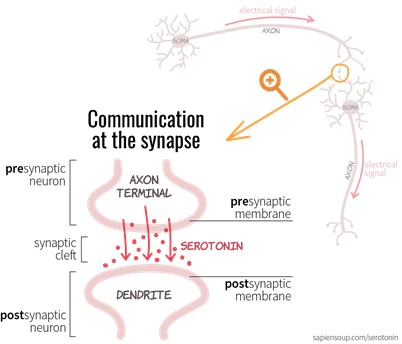Serotonin– the ‘feel good’ chemical: Serotonin is commonly known as the feel-good neurotransmitter in the brain that plays a significant role in regulating mood. In specific, serotonin is associated as being a calming neurotransmitter. While this is true, serotonin receptors exist all over our body, and serotonin has multiple functions. Some of these functions include regulating our regulating our bowels, blood clotting and sexual function. The mood improving effects of serotonin were first discovered in 1954 when scientists delved deeper into why recreational drugs like LSD triggered a spike in good mood.

Types of serotonin Deficiencies
- Tryptophan deficiency: Tryptophan is an amino acid in the body essential in the creation of serotonin. This amino acid may be deficient in a person suffering from depression or anxiety
- Gray matter deficiency: The gray matter of the brain consists of nerve cells (neurons) in parts of the brain (cerebellum) associated with thinking, memory, and emotion. There are receptors in the brain responsible for binding serotonin. Certain individuals do not have enough ‘gray matter’ in the brain where nerve cells called neurons release serotonin into other nerve cells with receptors that activate the serotonin. The objective is to have a sufficient quantity of serotonin between both neurons.
- Neurotransmitter deficiency: Certain individuals have receptors that are simply not stimulating enough serotonin. Receptors need to be stimulated, in such a way that neurotransmitters are released into the space between two neurons (the synaptic cleft). After the neurotransmitter send their signal from nerve to the other in order to release serotonin into the synaptic space, re-uptake occurs. Re-uptake is a process where the serotonin is taken back into the previous (pre-synaptic) nerve cell. Serotonergic anti-depressants play a role in preventing this re-uptake process leaving more serotonin between the nerve cells in the brain. The rest of the serotonin is broken down (metabolized) by an enzyme called monoamine oxidase.
